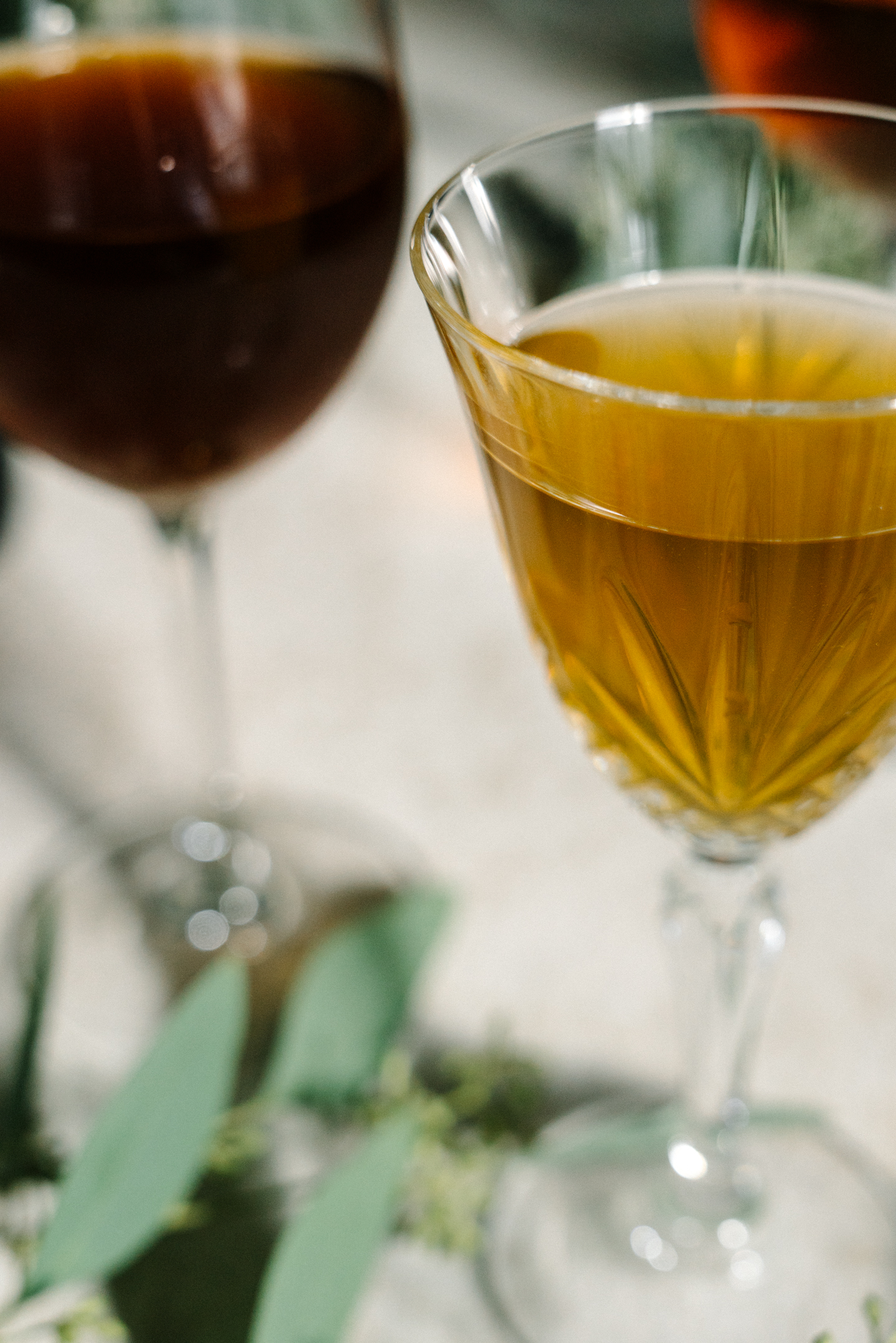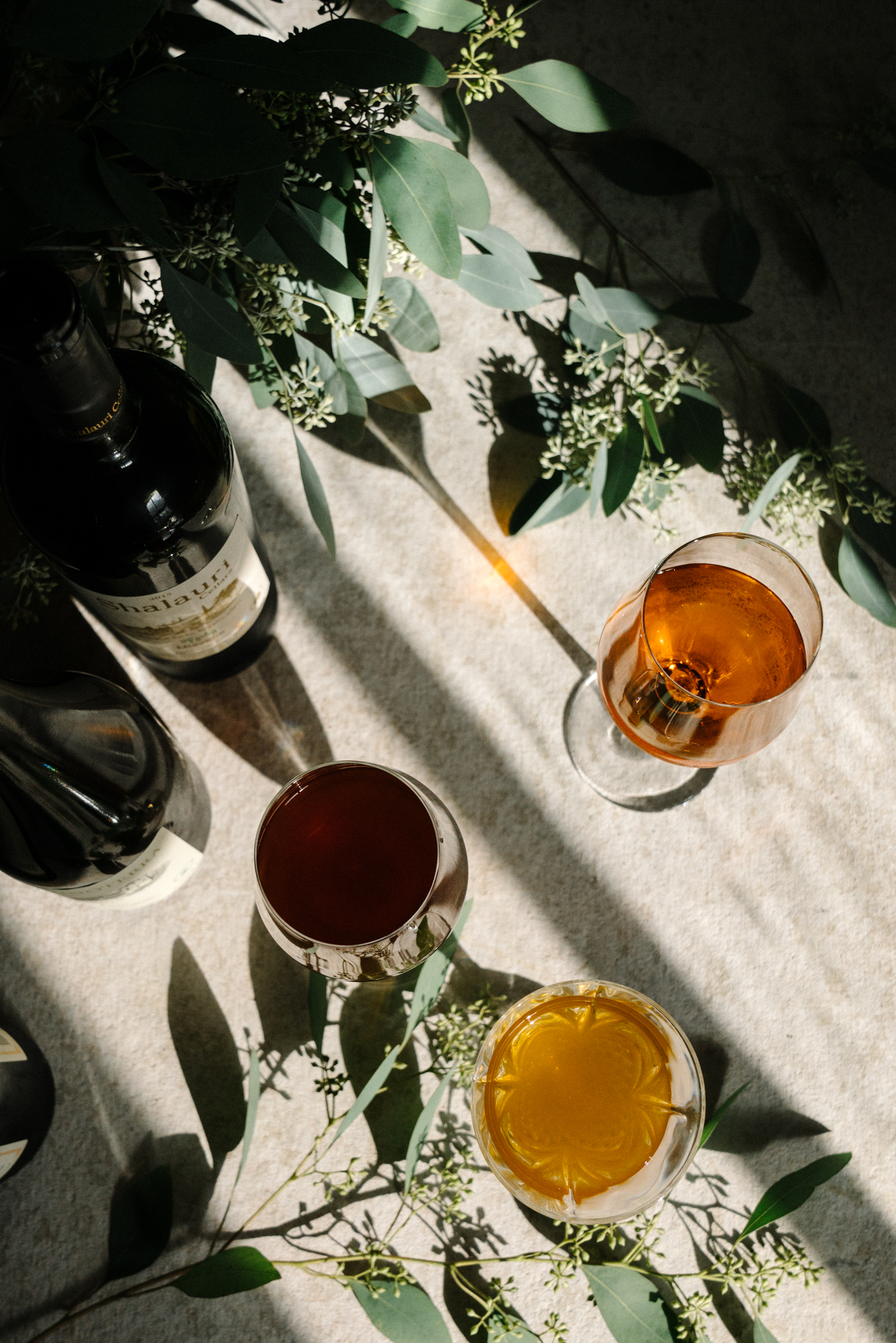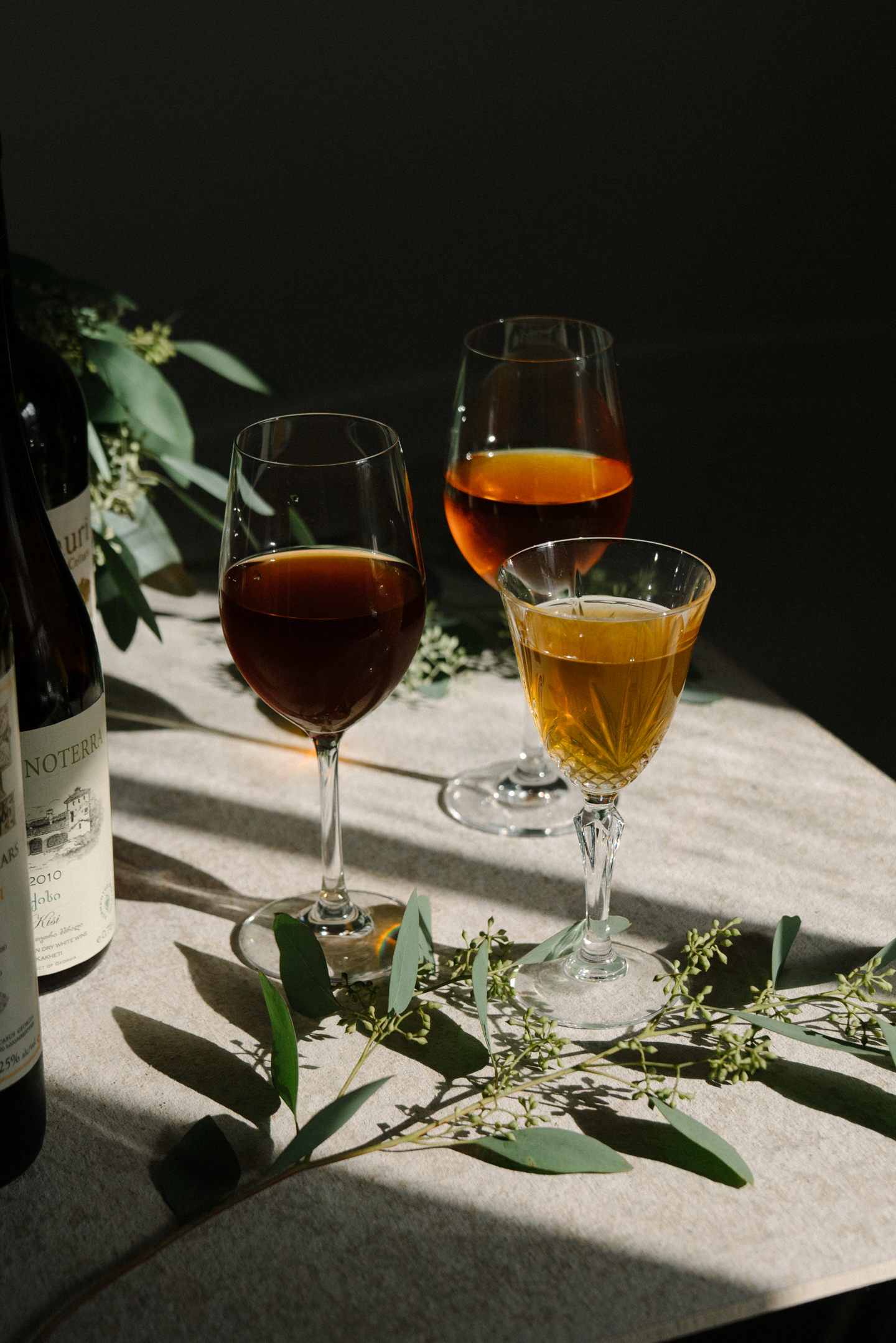Orange Wine 101

Orange wine 101: the basics of orange wine defined and three bottles to compare under $40.
Before we dive into what feels like the complex sometimes exclusive world of wine where people are afraid to ask questions, let's take a look at why orange wine will be the next trendy thing. Remember rosé? Before it became sought after and wonderful and acceptable? No one wanted to accept rosé. It wasn't white wine. It wasn't red wine. It was pink, not serious and therefore it was garbage. Until it wasn't.
I think because we've accepted not strictly 'white' or 'red' wines in food and beverage culture, we're ready to accept orange wines...especially for fall and winter seasons. Now I will caution you, orange wine is not 'fall water'. It's by no means (in my opinion and extending only as far as the varieties I've tried) as easy to drink as rosé. The varieties I prefer are challenging. It's something that makes you slow down to think. And with that said, now, in 2022 the skin contact selections available (both orange and rosé run the gambit between easy to drink and ‘difficult). But maybe that's what we want for fall: slow. Tradition revived. Because, by the way, orange wine is thousands of years old. And that's where this 101 begins. Orange wine is not new. It's simply being re-discovered.
Our personal orange wine journey began in late summer. We were planning our trip to Copenhagen, polling people who had recently visited for the best places to eat and drink to use our time wisely (because you can't eat dinner six times a day, no matter how much you want to). One highly trusted, globe trotting eater, told us if were going to do anything in Copenhagen, it needed to be a visit to her favorite wine bar in the world: Ved Stranden 10 to get a glass of Tschida (a premium natural Austrian wine producer).
So we did. Because we're not people to mess with singular 'best in the world' kind of advice. We had our first glass of orange wine, late at night in the summer dusk of Copenhagen's cobble streets and here we are: scouring the internet for buying sources of orange wines from Virginia. Interestingly, although many major food and beverage publications have touched on orange wine scattered over the past few years, it seemed hard to tease out the basics for a beginner. Below are the absolute basics of orange wine:
Orange Wine Defined:
White wines made like red wines-ish. White wine left to macerate on skins for a longer period of time than usual...anywhere from a few days to months. - WineSearcher.com
Made from white grapes that are left in their skins for an extended period, allowing complex flavors and signature flavors to develop...look for wines labeled 'skin contact or extended maceration'. -Martha Stewart Living
A wine process from the Republic of Georgia dating back some 5000 years in which grapes are placed in large vessels, usually clay, and sealed to ferment.
Flavor:
Because of the extended maceration, orange wines have 'tannin, strength, backbone and stability'. They may show a similar texture to red wines with tannin, depth of flavor and texture. Remember, obviously each wine variety, region and producer is going to have different tastes and aromas.
Color:
From pale gold to deep amber, they're orange in some way. You can see in the images in this orange wine 101 post the differences in three varieties we selected.
Is all orange wine natural wine?
Not necesarily. Orange wine can be done with any white grape source. Skin contact masceration is a technique in winemaking.
Wait, what's natural wine?
Okay- don't get distracted, this is a whole other topic but I feel like many orange wines you can get your hands on also happen to be natural. According to Bon Appetit, a natural wine is a wine with "nothing added or taken away....no chemicals in the vineyard or cellar, no filtering, no added sulftes...". But in a more emotional sense B.A. describes natural wine as wine made by people who "buck conventions and break regional rules...it's not for awarding points. It's for feeling".
Is Georgian Wine the same as orange wine?
No. Orange wine is the result of a process, remember? But the Georgians (country, not peach Georgia) developed it and many of the bottles you can get your hands on currently, are produced there. It’s one of the oldest wine making regions and they’re known for their skin contact wines.
Are there American Orange wines?
There very few right now. I specifically looked into Virginia producers but only came across one who produced a very small batch and only gave it to wine club members (2017). In California there's Pax Mahle, Wind Gap, Salinia, and Scholium Project. We've also seen mentions of A To Z Wines in Oregon as well as Channing Daughters on Long Island.
In 2022, we’re seeing more, especially locally from younger producers.
In the traditional sense, Slovenia and Georgia used to lead the way for orange wine production with the most popular ones being Phesant's Tears (mentioned in this tasting group) and Alaverdi with Movia in Slovenia. but also look for the following producers:
Australia: Lucy Margaux, Shobbrook, Si Vintners and Patrick Sullivan
Northeast Italy: Radikon, Gravner, Vodopivec, Princic, Kante and Bressan
France: Domaine Jean-Yves Peron, La Sorga
Austria: Strohmeier, Werlitsch
Is there a specific grape variety used to make orange wine?
No. There are many white grape varieties that can be used. In fact, if you look at the three we picked to try below, they are made from three different varieties you've probably never heard of before.
What kind of food do I pair it with?
Grilled meat and seafood, specifically fowl and grilled pork.
How do I serve it?
Slightly cool. Not out of the fridge cold.
Where can I try it?
If you live in New York City... a lot of places (*jealous*). The Georgian Wine House resource I give at the bottom of this post sends much of their imports to NYC restaurants and bars. There are a few places that serve it in DC (Compass Rose and Red Hen) and I'm sure a ton in California, but there is no way you're going to find this in a standard restaurant at this point. Your best bet is to go to a wine shop and talk to someone who knows their stuff.
For us, in northern Virginia, we have access to Domestique wine shop in DC and also Neighbors and Goose Cup.
Shalauri Cellars Mtsvane 2013- $35.99
*** Our favorite of the 3 but definitely not as good as a glass of expensive Tschida we had in Copenhagen
91 POINTSWine & Spirits Magazine 2013
100% Mtsvane grapes in qveri style (clay jar burried)
Unfiltered natural wine
6 month skin contact
Tasting: honey, dried fruit, herbs, nutiness, firm tannin
Vinoterra Kisi 2010- $29.99
100% Kisi grapes fermented in qveri (clay jars), then matured in oak
Kisi tends to be more Aromatic then Rkatisteli but with sound structure, aggressive tannin and balance acidity. It is a perfect varietal for the Kakhetian style ready for aging.
6 month maceration
Unfiltered
"From Wine & Spirits Magazine: "Kisi’s sweet, golden apple and Bartlett pear flavors gain richness from time spent in earthenware qvevri, brown sugar notes joining tannic skin tones to create a warm, earthy symphony of flavor. The wine lasts, a rich minor chord of juicy, autumnal flavor, the acidity in the wine carrying an energy like a piano string vibrates with sound."
Pheasant's Tears Rkatsiteli Amber Wine 2015- $19.99
Rkatsiteli is an ancient pale-skinned grape variety from the Republic of Georgia which is described as 'restrained and refreshing...quince and white peach'
Tasting: 'raw honey, walnuts, dried apricots, resin with a tannic palate', also described as having a hint of nail polish and paint (true in our experience)
Additional resources for orange wine:
Orange Wine on Instagram. Not a super active account, but a great scroll through to look at past orange wines they've tried.
Dietitian Nutritionist and cookbook author sharing flavor-forward recipes and simplified science-driven wellness.













